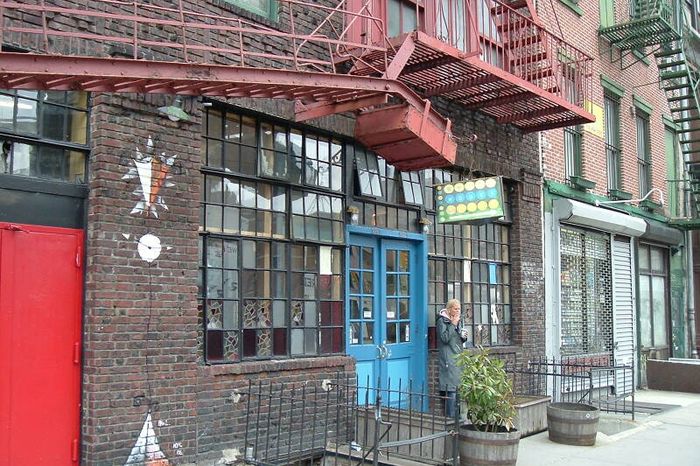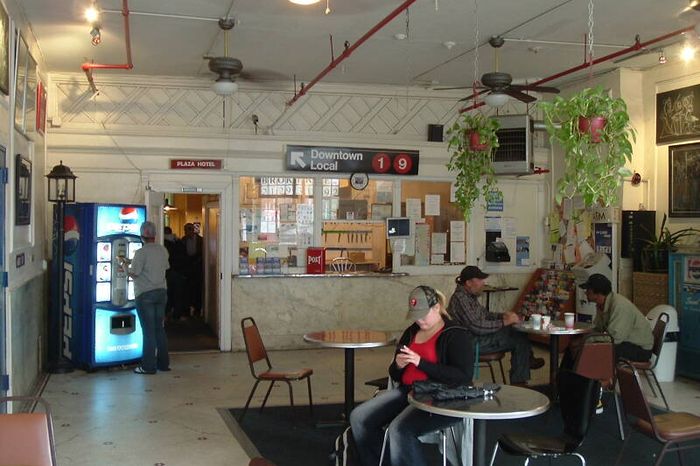The Now Now Capsule Hotel Opens on Bowery in NYC

When the hotelier Phil Hospod first visited 338 Bowery, he fell for the location. The 19th-century brick building sat in prime Noho — a 15-minute walk from Balthazar on one side and Superiority Burger on the other, blocks above the New Museum and below St. Marks Place. A capsule hotel where travelers would hardly want to be in the room just made sense. “I was like, If this is gonna work anywhere, it’s gonna work here,” he said.
In fact, some version of it has worked here for about 126 years, off and on. The Now Now opened this week in a space that, until 2018, was occupied by the final surviving Bowery flophouse, a former “hotel for derelicts,” as a reporter visiting from Buffalo described it in 1954. Around the turn of the century, this stretch of the Bowery housed 25,000 people a night — pulling in generations of soldiers returning from combat, drunks, men on the verge of homelessness, and later, artists who snubbed day jobs. Some stayed so long they earned tenants’ rights, paying as little as $6 to $9 a night as recently as 2007. Rooms came without electrical outlets, and the ceiling was more of an idea than an actual structure. (To meet city code for ventilation, the hostel couldn’t enclose the rooms and capped them with wooden garden lattices — an improvement over the chicken wire that once earned these places the nickname of “cage hotels.”)
The exterior of the old hotel, where the blue doors led to the lobby of a hostel that opened in 2000 in half of the building.
Photo: Bob Cromwell
If the Bowery is returning to its SRO model, it’s partly because skyrocketing hotel costs — rooms across the street, at the Bowery Hotel, now start at around $800 a night on a Friday, and the average room in the city hit $417 last year. At the Now Now, travelers paying $125 a night check in on iPads in a tiled lobby striped with rows of pink and brown arches. Up the flop’s original stairway are rows of wooden doors to rooms that Now Now describes as “sleeper cabins.” Modeled after luxury-train compartments, the “cabins” are “minimalist in size but sumptuous in detail,” per interior designer Islyn Studio, which paneled rooms in blonde wood that wraps around beds lit by warm amber bulbs and dressed in crisp white Garnier-Thiebaut linens. “We’ve created this obviously different experience aesthetically,” says Hospod, the hotelier. “But conceptually, we are also catering to transient travelers.” The rooms are, the hotel emphasizes, for solo travelers only. It would be hard to squeeze in a guest, anyway. The room is 27 square feet — or almost exactly the size of a standard full-size mattress.
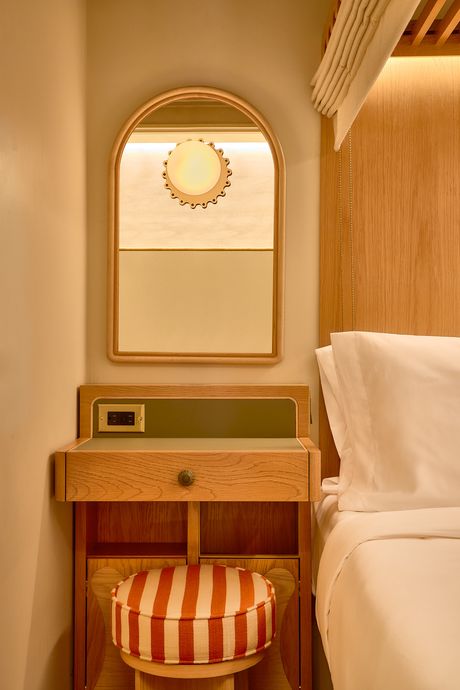

Rooms come with nightstand desks, stools, mirrors, and warm lighting. Storage is under the bed, and a row of hooks on the opposite wall are useful for coats, towels, and robes. From left: Photo: Matthew KisidayPhoto: Matthew Kisiday
Rooms come with nightstand desks, stools, mirrors, and warm lighting. Storage is under the bed, and a row of hooks on the opposite wall are useful for…
Rooms come with nightstand desks, stools, mirrors, and warm lighting. Storage is under the bed, and a row of hooks on the opposite wall are useful for coats, towels, and robes. From top: Photo: Matthew KisidayPhoto: Matthew Kisiday
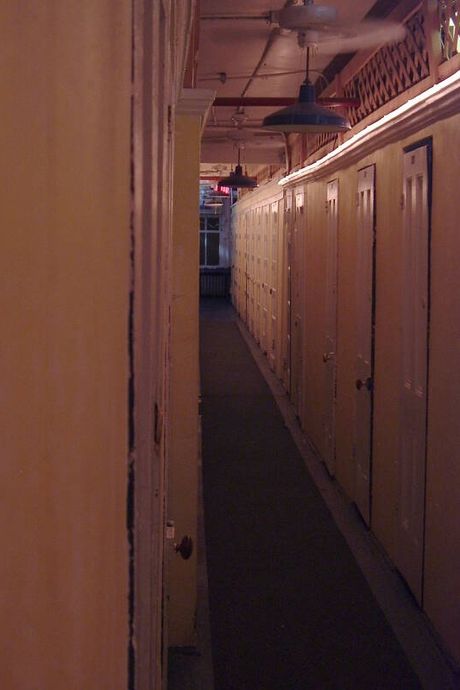
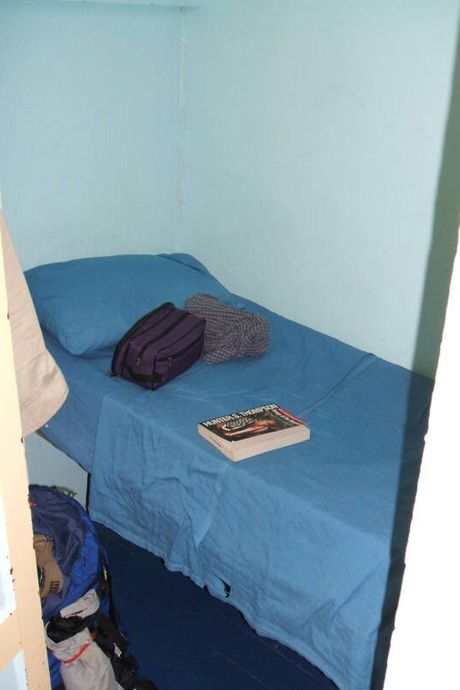
The rooms before Now Now took over. Rows of doors at the old hotel led to small cubicles not much larger than beds. From left: Photo: Bob CromwellPhoto: Bob Cromwell
The rooms before Now Now took over. Rows of doors at the old hotel led to small cubicles not much larger than beds. From top: Photo: Bob CromwellPhoto…
The rooms before Now Now took over. Rows of doors at the old hotel led to small cubicles not much larger than beds. From top: Photo: Bob CromwellPhoto: Bob Cromwell
Then there’s the question of noise. “Tell me more about the open ceilings …” reads the FAQ page, which explains “cabins” are covered with “linear acoustic baffles,” or slats with sound-absorbing material, which of course can’t absorb everything. To satiate semi-posh travelers, Now Now throws in extras: free earplugs and sound machines, plus a Brooklinen robe for the awkward stroll to the showers. The hotel also rents an array of gadgets and gizmos: Game Boys, virtual-reality gizmos, iPads, and even red-light masks.
The lobby of the hostel, which closed in 2014.
Photo: Bob Cromwell

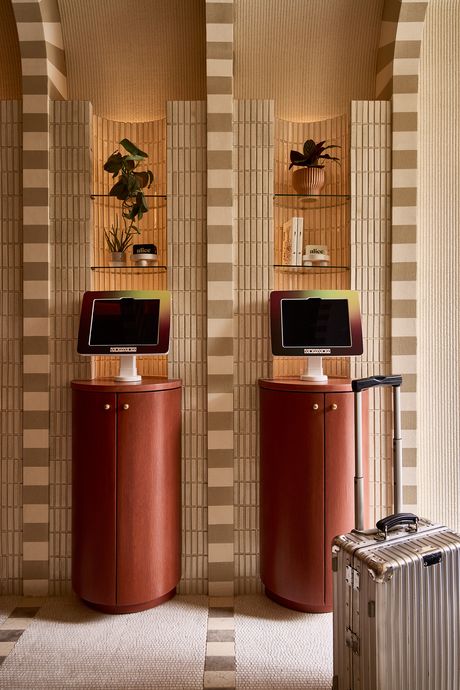
The new lobby entrance is on the other side of the central staircase, in a slimmer space. It’s modeled after a train station and includes self-check-in stands. From left: Photo: Matthew KisidayPhoto: Matthew Kisiday
The new lobby entrance is on the other side of the central staircase, in a slimmer space. It’s modeled after a train station and includes self-check-i…
The new lobby entrance is on the other side of the central staircase, in a slimmer space. It’s modeled after a train station and includes self-check-in stands. From top: Photo: Matthew KisidayPhoto: Matthew Kisiday
The rooms may now be fancier, but they look pretty familiar to Bob Cromwell, who stayed at the Whitehouse about 15 to 20 times before the hostel side closed in 2014 and documented his visits on a personal blog. A consultant who came to the city a few times a year, Cromwell would often pay out of pocket to extend his trips. A history buff, he relished the idea of staying in a real Bowery flop, even if he was almost too big to fit. “I’m six-foot-three, so my head would be touching one end, and my feet would touch the other,” he said. Still, he kept coming back. Noise wasn’t a thing. “Once in a while, someone would be loud, but they’d generally get yelled at pretty quickly by someone else.” When the hostel closed, he migrated down the street to another cleaned-up former SRO, the Bowery House, which rebranded last year as the Nolita Express, with rooms it calls “pods” where the lattice ceilings are now painted in cream. On the Now Now renovation, Cromwell said he missed the old signs, which listed rules for the guests that must have dated back to the flophouse era: “No fighting, no screaming, no spitting.”
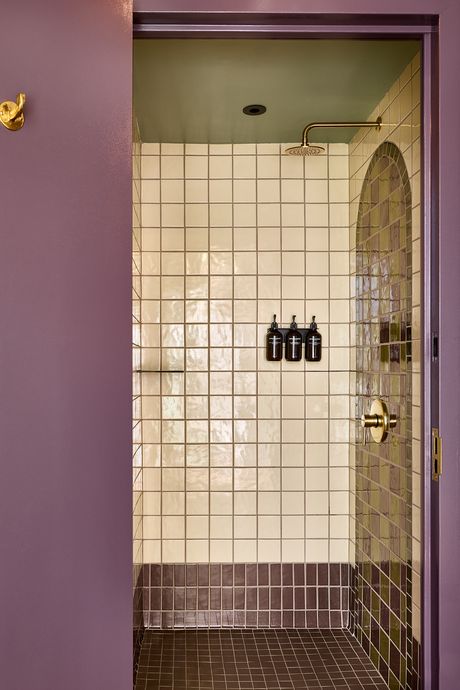

Rooms don’t have private bathrooms, but the facilities at the end of each hall have been given a major upgrade. With no hotel restaurant, Now Now offers its take on a vending machine. From left: Photo: Matthew KisidayPhoto: Matthew Kisiday
Rooms don’t have private bathrooms, but the facilities at the end of each hall have been given a major upgrade. With no hotel restaurant, Now Now offe…
Rooms don’t have private bathrooms, but the facilities at the end of each hall have been given a major upgrade. With no hotel restaurant, Now Now offers its take on a vending machine. From top: Photo: Matthew KisidayPhoto: Matthew Kisiday
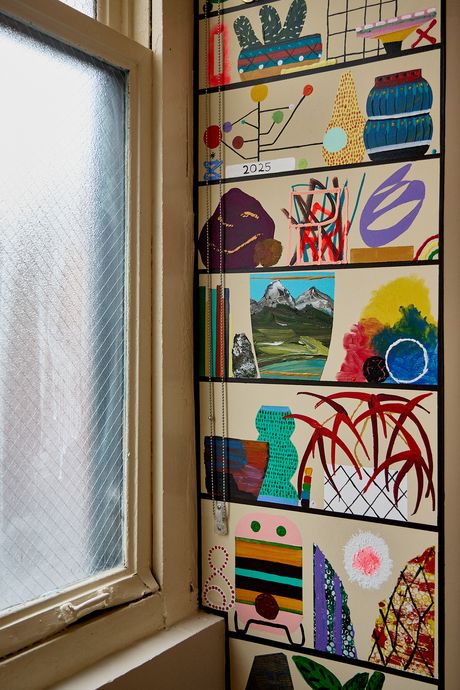
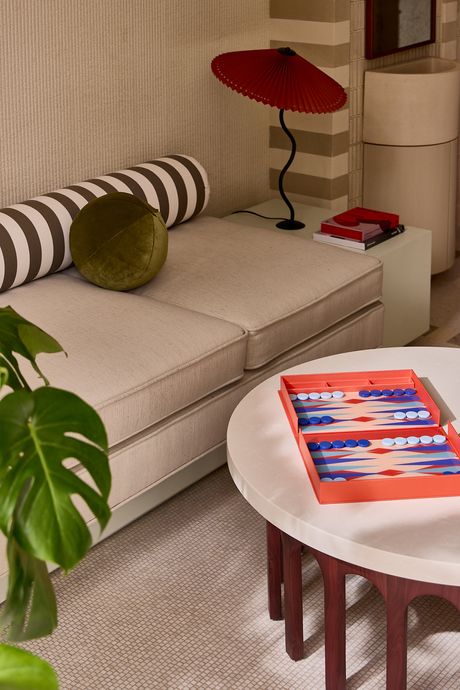
Stripes, squiggles, and jewel tones push the old SRO into a Gen-Z aesthetic. From left: Photo: Matthew KisidayPhoto: Matthew Kisiday
Stripes, squiggles, and jewel tones push the old SRO into a Gen-Z aesthetic. From top: Photo: Matthew KisidayPhoto: Matthew Kisiday



